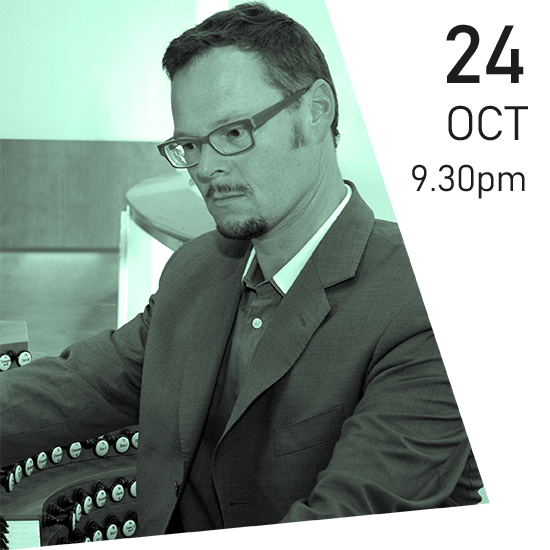 October 24, Thursday, 9.30 pm
October 24, Thursday, 9.30 pm
Igreja de São João Evangelista, Funchal
Christoph Hauser, organ
The selected pieces are predominantly composed in a joyful character. Fanfare and Processional by Andrew Carter was intended as a brilliant opening to a festive service. The English composer frequently writes for organ and for the Anglican liturgy. In Fanfare, the horizontal trumpets of the organ can be heard, underlining the festive character of the piece. Giambattista Martini’s Sonata exudes a lively joy in the fast movements: the composition technique is markedly polyphonic and delicate, and the work has an appearance of easiness, despite being quite difficult to play. Interestingly, the young Mozart learned music theory from Fr Martini. Jupiter, Bringer of Joy by Gustav Holst (from the famous suite The Planets) contains, after the rhythmically exuberant introduction, an impressive and famous hymn that is still sung as a religious song in England. Gustav Holst initially intended to pursue a career as a pianist. At the age of seventeen, however, he had to give up this plan, due to a nerve infection in his arm, which would stay with him for the rest of his life. Holst also suffered from asthma and myopia throughout his life. In contrast, Jean-François Dandrieu was a sought-after performer on harpsichord and organ and must have improvised incredibly impressively. At eighteen he was appointed organist at the church of Saint-Merry in Paris. In 1721 he was promoted to organist at the Royal Chapel. Finally, in 1733, he succeeded his uncle, Pierre Dandrieu (1664-1733), in the same role at Saint-Barthélemy. He was one of the French composers of his time to try to break with the rigid musical conventions of his homeland, also introducing elements of the much less rigid Italian style. Dandrieu composed works in all genres, including violin sonatas, pieces for harpsichord and organ, and several arias. The piece included in this recital is one of his most exuberant. Licinio Refice (1883-1954) was an Italian composer and priest. With Monsignor Lorenzo Perosi he represented the new orientation of Italian sacred music in the 20th century and left us the popular song Ombra di nube (1935) and two complete operas. His Berceuse is characterized by captivating simplicity and seductive harmony. At the beginning of his musical career, Ludwig van Beethoven first distinguished himself as a piano virtuoso. One of his strengths was the free improvisation on the instrument. After moving from Bonn to Vienna, his talent immediately took him into the highest social circles of the Habsburg metropolis. A hearing problem that worsened over time until almost complete deafness led to the premature end of his career as a pianist. The illness triggered a crisis, which Beethoven lets transpire in his Heiligenstadt Testament in 1802. Beethoven maintained many contacts with women from his environment. There is a famous letter written in 1812 and addressed to his immortal love – whose identity has not been completely clarified to this day. At the end of the concert, his most famous melody will be heard: the “Ode to Joy” from his 9th Symphony, wonderfully used in a set of organ variations by the legendary Munich organ teacher Harald Feller. But the program also includes slightly calmer nuances, in addition to two improvisations on the themes “Peace” and “Joy”.
— Christoph Hauser —
Programme
Andrew Carter (1939)
¬ Fanfare and Processional
Christoph Hauser (1972)
¬ Improvisation "Peace"
Giambattista Martini (1616-1667)
¬ Sonata in F major
› Allemanda
› Allegro
› Grave
› Aria
› Gavotta
Gustav Holst (1874-1934)
¬ Jupiter, bringer of Joy (The Planets)
Jean-François Dandrieu (1682-1738)
¬ Offertoire
Christoph Hauser
¬ Improvisation "Joy"
Licinio Refice (1883-1954)
¬ Berceuse
Harald Feller (1951)
¬ Beethoven-Variationen
(Variations and fugue on "Ode to Joy")
